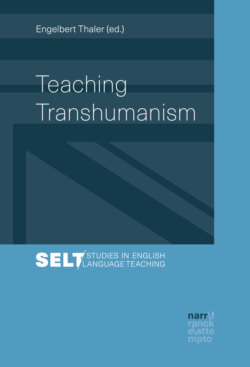Читать книгу Teaching Transhumanism - Группа авторов - Страница 33
На сайте Литреса книга снята с продажи.
6. Challenges
ОглавлениеWhere there are benefits, there must be problems as well. “Nichts ist ohne sein Gegenteil wahr”, as Martin Walser once claimed, or “Sic et Non” (“Yes and No”), as Peter Abelard, the medieval French scholastic philosopher, stated in the 12th century.
Dealing with trans-/posthumanism in the classroom presents the teacher with two challenges which are anything but insignificant. In terms of discourse evaluation, it is often difficult to distinguish between serious argumentation and fashionable hype. What is catchy neologism, euphoric take-off into dream worlds, sectarian dogmatism, irrational speculation, fanaticism, nihilism, expression of human self-hatred, fear-of-death-driven fantasy? And where are we dealing with scientifically founded and ethically reflected developments? With some advocates of transhumanism, one believes to be able to diagnose symptoms of over-confidence. Hype or hubris?
From a didactic point of view, high demands are put on the teacher’s competence. Who possesses sufficient domain-specific knowledge in artificial intelligence, nanotechnology, biotechnology, information technology, simulated reality, super-intelligence, chemical brain preservation, 3D bio-printing, mind uploading, cryonics? “Dealing with the posthuman as an encounter with alterity on various levels presupposes and requires quite a lot of theoretical knowledge, textual-analytical skills and understanding” (Hoydis 2019: 175). The complexity and heterogeneity of the topic is further exacerbated by partly contradictory positions and intersections between post- and trans-, between humanism and feminism, colonialism, modernism etc.: “One runs the risk of overburdening the curriculum with just one too many ‘-isms’, ‘post-’, and ‘trans-’, each of which, of course, easily warrants instructional consideration and a class (or several) on its own” (Ib.).
